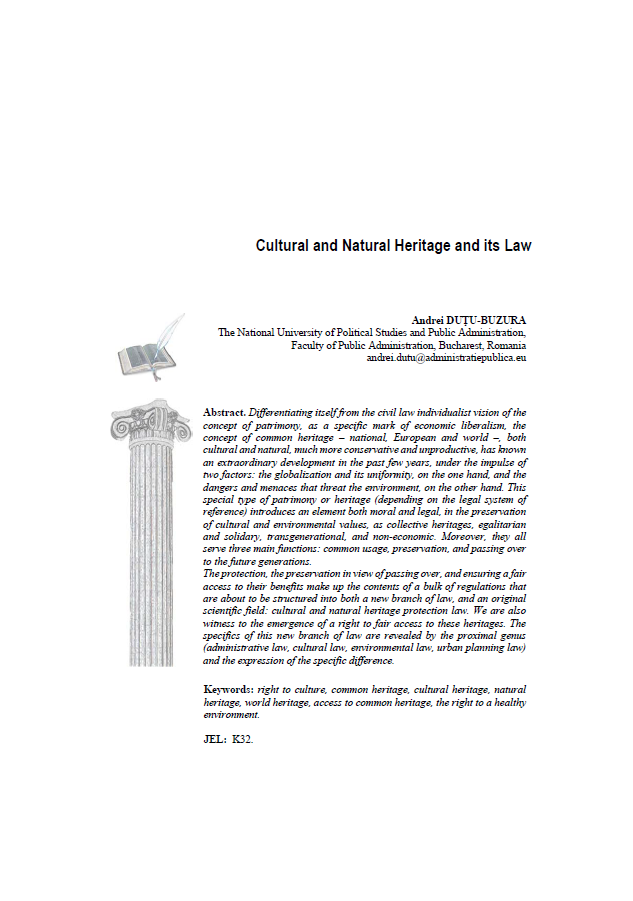Cultural and Natural Heritage and Its Law
Keywords:
right to culture, common heritage, cultural heritage, natural heritage, world heritage, access to common heritage, the right to a healthy environmentAbstract
Differentiating itself from the civil law individualist vision of the concept of patrimony, as a specific mark of economic liberalism, the concept of common heritage – national, European and world –, both cultural and natural, much more conservative and unproductive, has known an extraordinary development in the past few years, under the impulse of two factors: the globalization and its uniformity, on the one hand, and the dangers and menaces that threat the environment, on the other hand. This special type of patrimony or heritage (depending on the legal system of reference) introduces an element both moral and legal, in the preservation of cultural and environmental values, as collective heritages, egalitarian and solidary, transgenerational, and non-economic. Moreover, they all serve three main functions: common usage, preservation, and passing over to the future generations.
The protection, the preservation in view of passing over, and ensuring a fair access to their benefits make up the contents of a bulk of regulations that are about to be structured into both a new branch of law, and an original scientific field: cultural and natural heritage protection law. We are also witness to the emergence of a right to fair access to these heritages. The specifics of this new branch of law are revealed by the proximal genus (administrative law, cultural law, environmental law, urban planning law) and the expression of the specific difference.

Downloads
Published
Issue
Section
License

This work is licensed under a Creative Commons Attribution-NonCommercial-NoDerivatives 4.0 International License.


